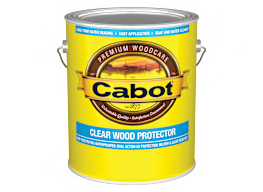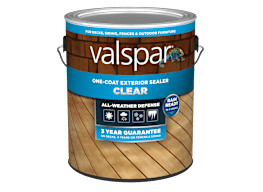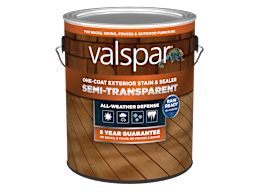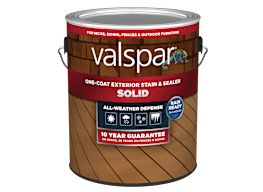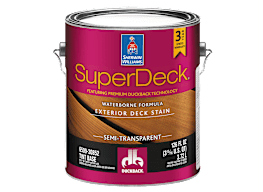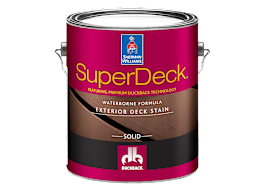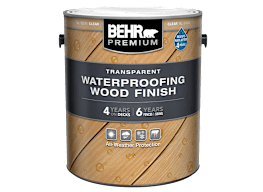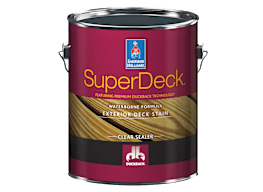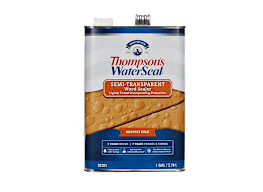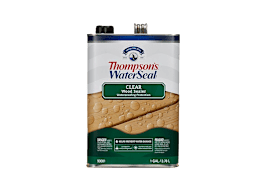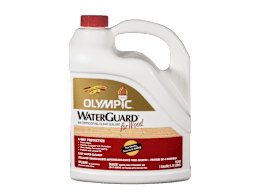
Wood Stain Buying Guide

Senior Home & Tech Editor
Wood stain adds a layer of beauty and protection to decks, fences, and exterior doors. And staining wood is a perfectly doable DIY project. But just because you can take on the task yourself doesn’t mean you want to deal with it more often than necessary. Here’s what you need to know about wood stains to keep the results looking good for years.
Why Wood Stains Are Important
To avoid frequent maintenance on your house’s exterior wood elements, you need a long-lasting stain that withstands weathering and regular wear and tear.
Wood stains are a must for older decks for health reasons, too. Before 2004, most decks were made of lumber pressure-treated with chromated copper arsenate (CCA) to prevent rot and insect damage. But concerns that arsenic, a toxin, could leach into the soil led to the introduction of other preservatives. If the wood in your deck is pressure-treated with CCA, the Environmental Protection Agency recommends regularly applying a penetrating coating, such as a semi-transparent or clear stain, to help reduce the leaching of arsenic.
If your deck is made of CCA lumber and its finish is flaking, we suggest calling a pro equipped to safely remove the old finish, dust, and debris.
But even on a new deck free of CCA, a good wood stain is crucial. Correctly applied, it can improve the appearance of the wood while helping it last as long as possible.
How CR Tests Wood Stains
To evaluate exterior wood stains, CR’s test engineers apply two coats to pine boards and place the boards on the roof of our headquarters in Yonkers, N.Y. We face them south and at an angle, like shingles on a roof, to intensify the effects of the sun and elements and accelerate weathering.
One year of testing tells you how a stain will look after one year on your deck or about three years of weathering on your home’s vertical surfaces (siding or fences), as you’ll see in our wood stain ratings. Our location in the Northeast exposes the boards to everything from ice storms to blistering heat and high humidity.
“The sun and water beat down on a deck, snow can pile up, and even dirt and mildew spores can settle on the flat surface,” says Li Wang, who oversees CR’s tests of stains and paints. “All those issues are minimized on a vertical surface.”
The least durable stains don’t hold up for even one year. The toughest remain close to new after three years without fading, cracking, or mildew buildup. Some also fend off dirt. CR members can see these detailed test results in our wood stain ratings by selecting Full View and moving the Ratings & Specs slider bar to the right.
Need a little more help narrowing down your options? Check out CR’s list of the best and worst wood stains.
Wood Stains and the Environment
Today’s wood stains must meet environmental regulations that require lower levels of volatile organic compounds. VOCs are linked to pollution, smog, and respiratory problems, and can cause headaches and dizziness. Some may even be carcinogenic. Top stains from our tests meet these environmental standards and still look good after up to three years on a deck.
Types of Wood Stains
Finishes vary according to how much of the wood’s natural grain they show. The best opaque treatments tend to last the longest. But you may prefer a semi-transparent or clear finish for aesthetic reasons. Prices of the wood stains in our ratings range from $22 to $130 per gallon.
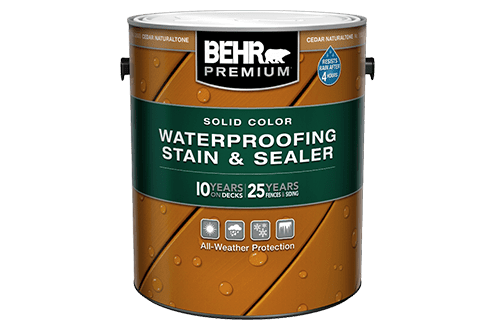
Solid Wood Stain
Also known as opaque, solid stains typically hold up the longest overall; the best should last three to five years on a deck. Solids hide the grain of the wood the way paint does, so they’re fine for pine decks, where seeing the grain isn’t important. They’re slightly less desirable on exotic hardwoods like ipe and tigerwood, where the natural appearance of the boards is part of the appeal.
The paintlike qualities of solid stains have their drawbacks. They might build up a film, especially after several coats, which can peel, chip, and crack like paint. And performance varies widely. The stains in this category receive Overall Scores of 12 to 82 (out of a possible 100) in our tests.
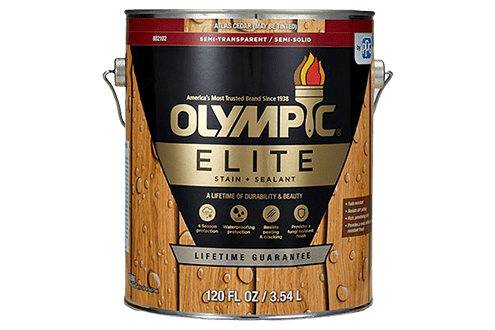
Semi-Transparent Wood Stain
Semi-transparent stains color the wood but let the grain peek through, making them a good choice for showcasing certain types of wood, such as Western red cedar.
In addition to typical semi-transparent stains, some brands may also offer what they label semi-solid and/or transparent stains or toners. They all work in a similar fashion by adding depth and protection to wood without covering its natural grain.
But the best semi-transparent stain in our ratings isn’t as tough as the top solid stains, and our data suggest that this type of stain will probably last only two to three years on a deck. The stains in this category also vary widely in performance, garnering Overall Scores of 8 to 41. So compare the products in our ratings before you shop.
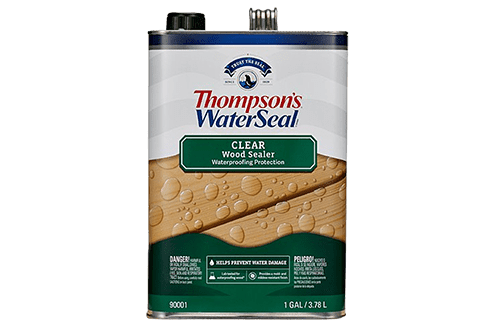
Clear Sealer
Clear sealers have little or no pigment, but they have water repellents. They’re ideal for accentuating the beauty of natural grain wood, although without anything to reflect ultraviolet rays, the wood will turn gray over time.
Going with this option also means you’ll probably have to restain your deck annually. As a group, the clear sealers we tested earn Overall Scores of 4 to 27 (out of 100).
Wood Stain Brands
Behr is a leading brand of exterior coatings and is sold at Home Depot and Walmart. For decks, Behr offers solid, semi-transparent, wood-tone, and clear finishes.
Benjamin Moore makes a wide variety of decking stains, including water- and alkyd-based solid, semi-transparent, wood-tone, and clear finishes. The company’s products are available at more than 7,500 independently owned paint and hardware stores throughout the U.S.
Many brands offer combined deck and siding stains, but Cabot makes alkyd- and latex-based solid, semi-transparent, and transparent stains tailored for each application. Cabot has also introduced stains for composite decking. Its wood stain products are available at Lowe’s and Walmart.
Olympic is a member of PPG’s family of coatings brands. (PPG was formerly known as the Pittsburgh Plate Glass Company.) Olympic’s exterior stains—which include solid, semi-transparent, wood-tone, and clear finishes—can be found at Home Depot, Lowe’s, and independent paint and hardware dealers. Its most widely sold stains combine deck, fence, and siding applications in one product.
Sherwin-Williams is the largest paint manufacturer in the U.S. The company manufactures deck treatments under the Deckscapes line, which is sold at more than 4,400 company-owned retail stores and facilities. Its stores offer a variety of paint supplies and tools.
With an effective advertising campaign that includes television spots over the past decade or two, Thompson’s WaterSeal has become a recognizable brand leader in deck treatments. The company’s signature product is a clear waterproofing finish, and it has expanded its line to include oil and latex stains. Thompson’s is available nationwide through home centers and major retailers, including Home Depot, Lowe’s, and Walmart.
Valspar is the house brand of paint and stain products sold exclusively at Lowe’s. Like other leading manufacturers, it offers solid and semi-transparent stains for decking.
Other brands on the market include Ace, Defy, ExoShield, McCloskey, Glidden, Ready Seal, and Varathane.
How to Prep a Deck for Staining
A newly built wood deck is ready to stain four to eight weeks after it’s installed. (This gives the wood, which is wet from the pressure-treating process, enough time to dry out.) Just clean the surface with soapy water and a scrub brush. Let it dry for about 24 hours, then apply the stain.
If you’re restaining a wood deck built before 2004, we recommend calling a professional to handle the cleanup and staining. For newer decks, you can do the task yourself. Washing and sanding are typical first steps. If you’re using a pressure washer, read the machine’s manual before getting started and cover adjacent landscaping with plastic sheeting. The pressure needed is typically 1,500 pounds per square inch. A wide-angle spray tip of 25 to 40 degrees creates a relatively broad spray that protects the wood. Angle the spray and keep it between 6 and 12 inches away from wood surfaces. For more on pressure washing, read “Can This Surface Be Pressure-Washed?”
















